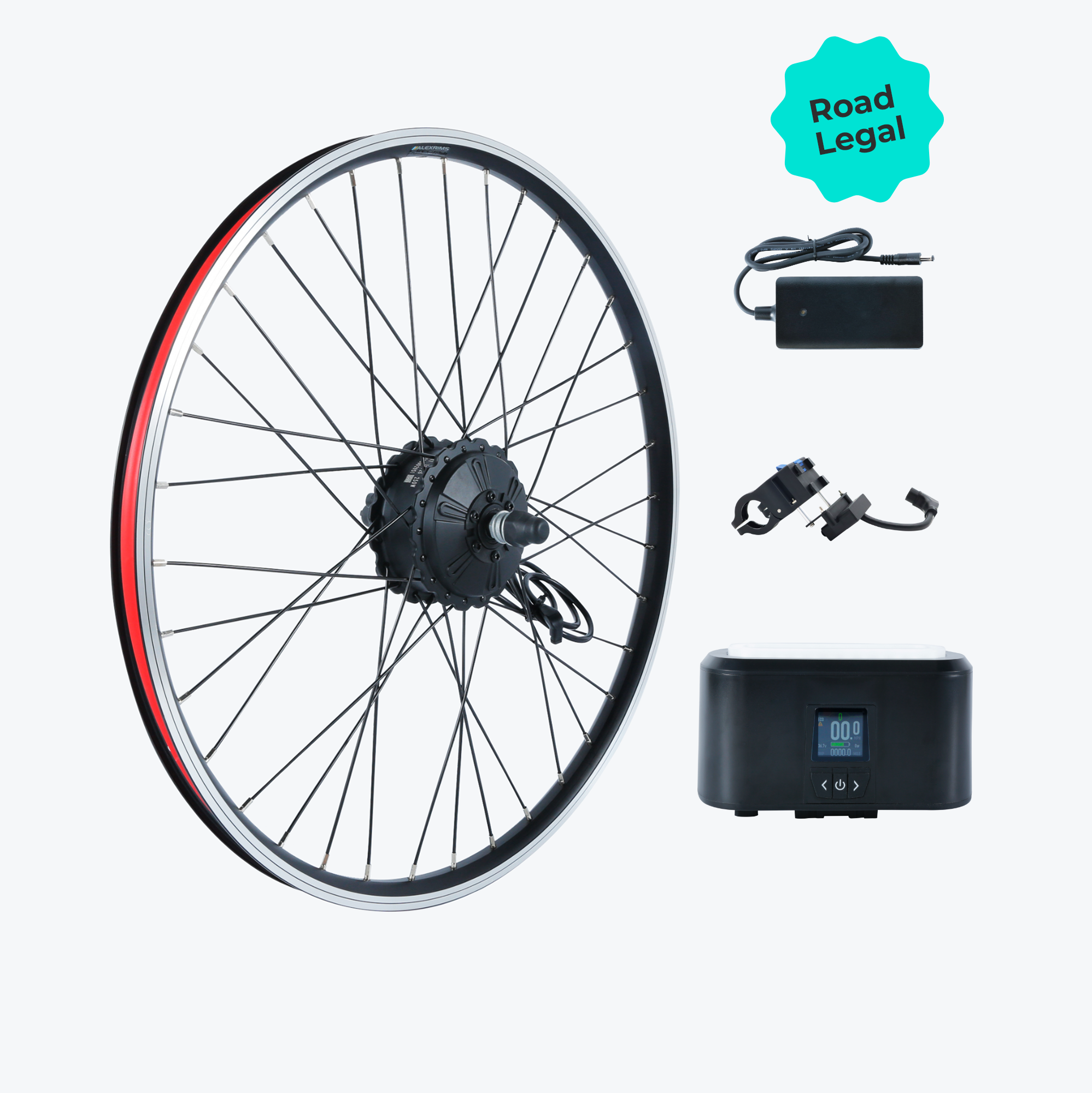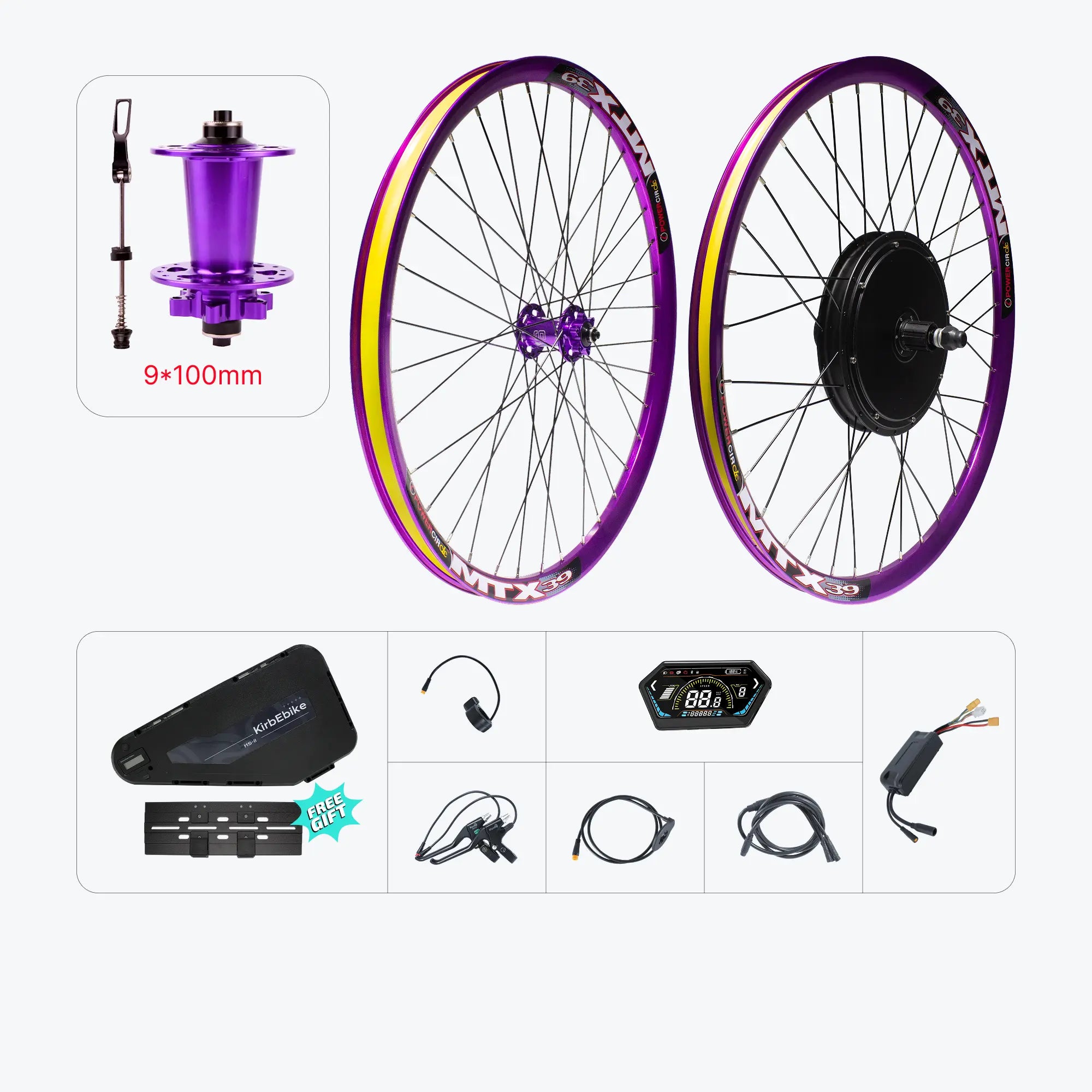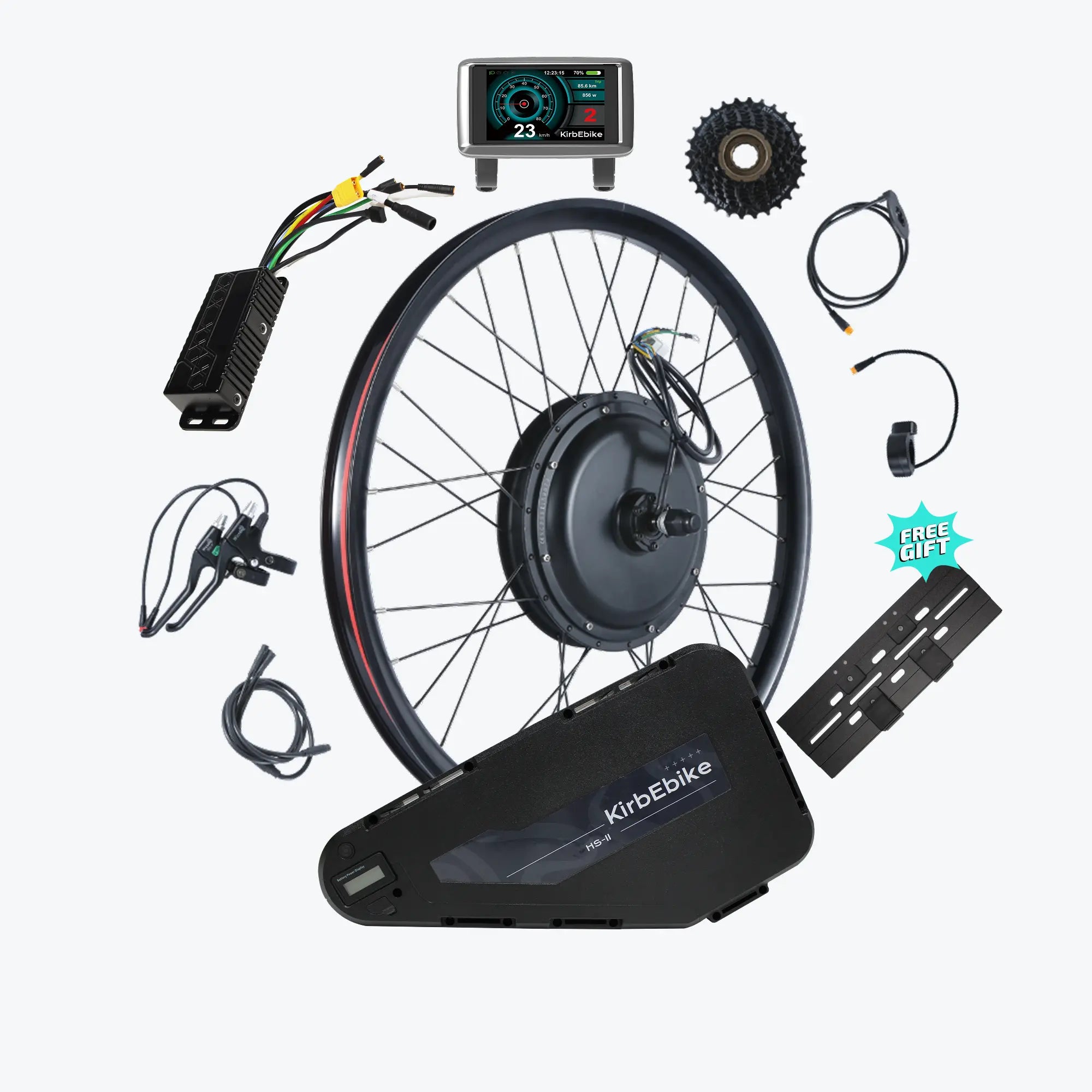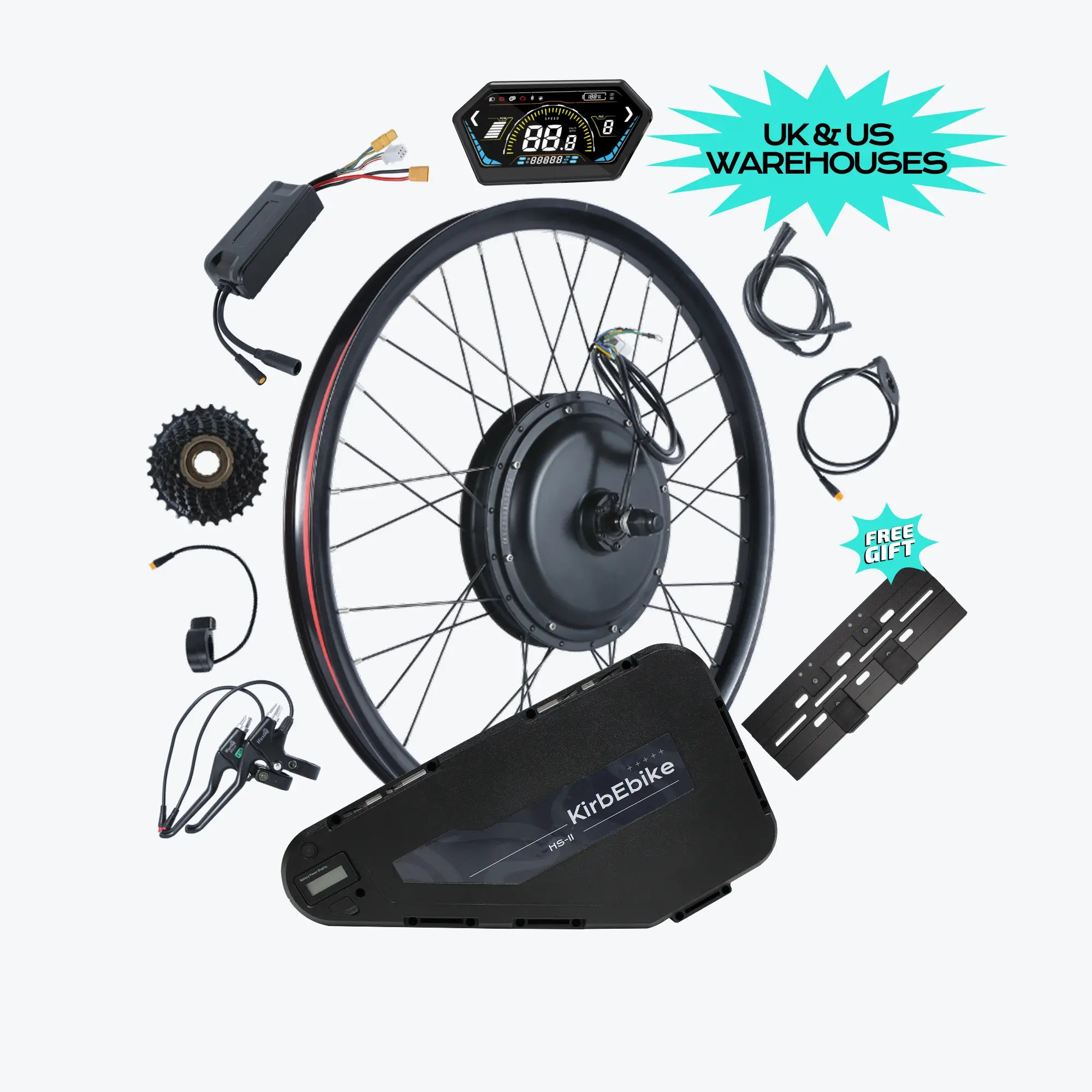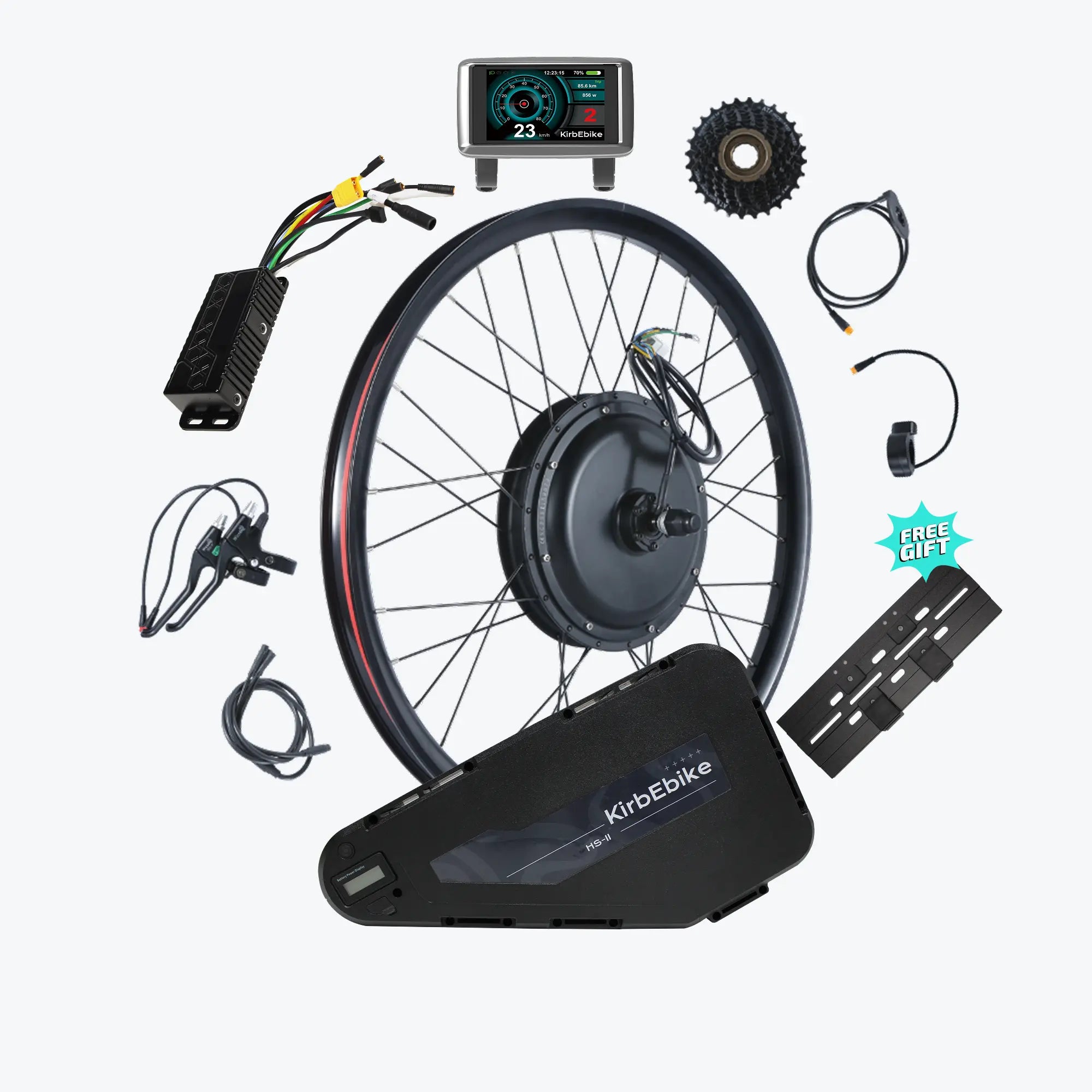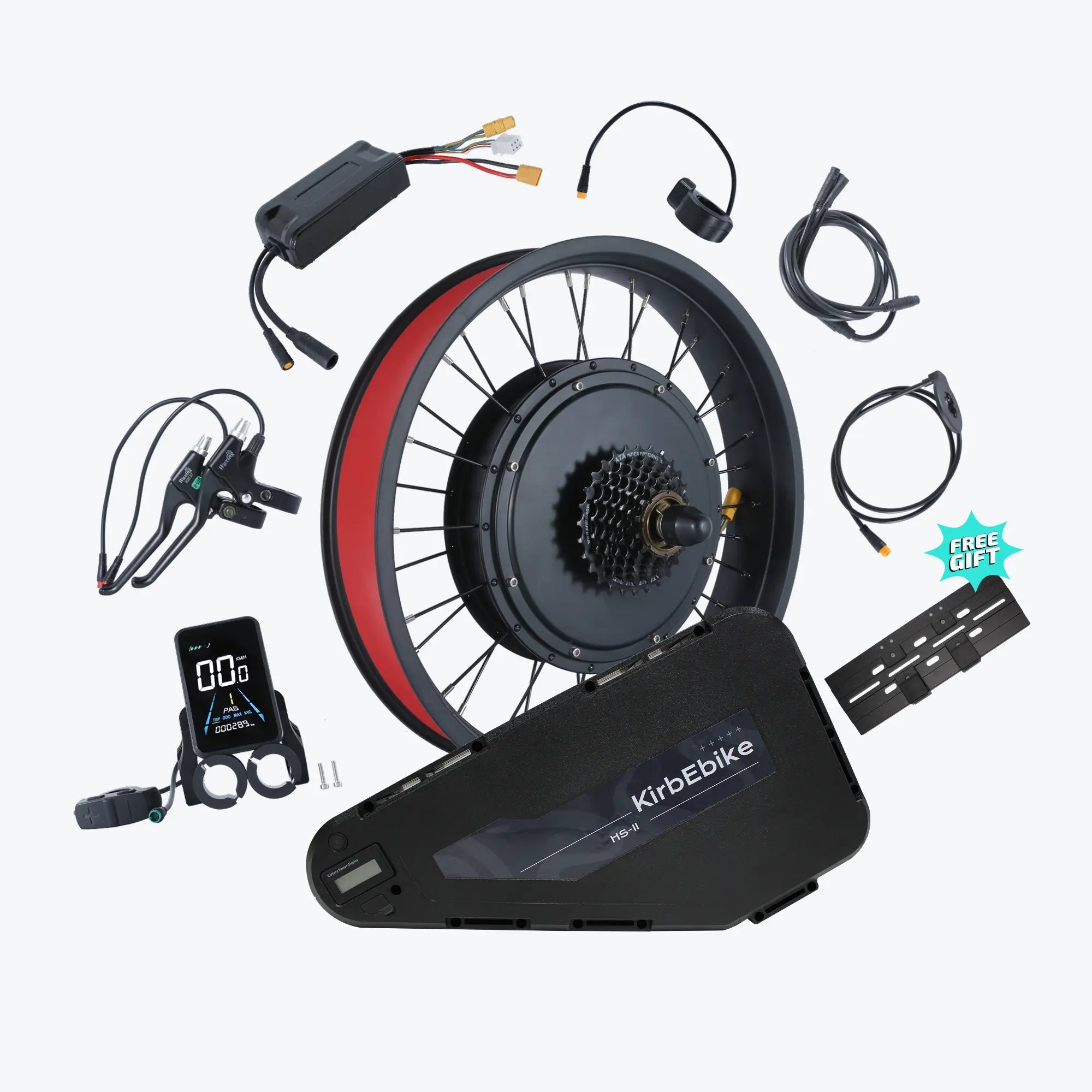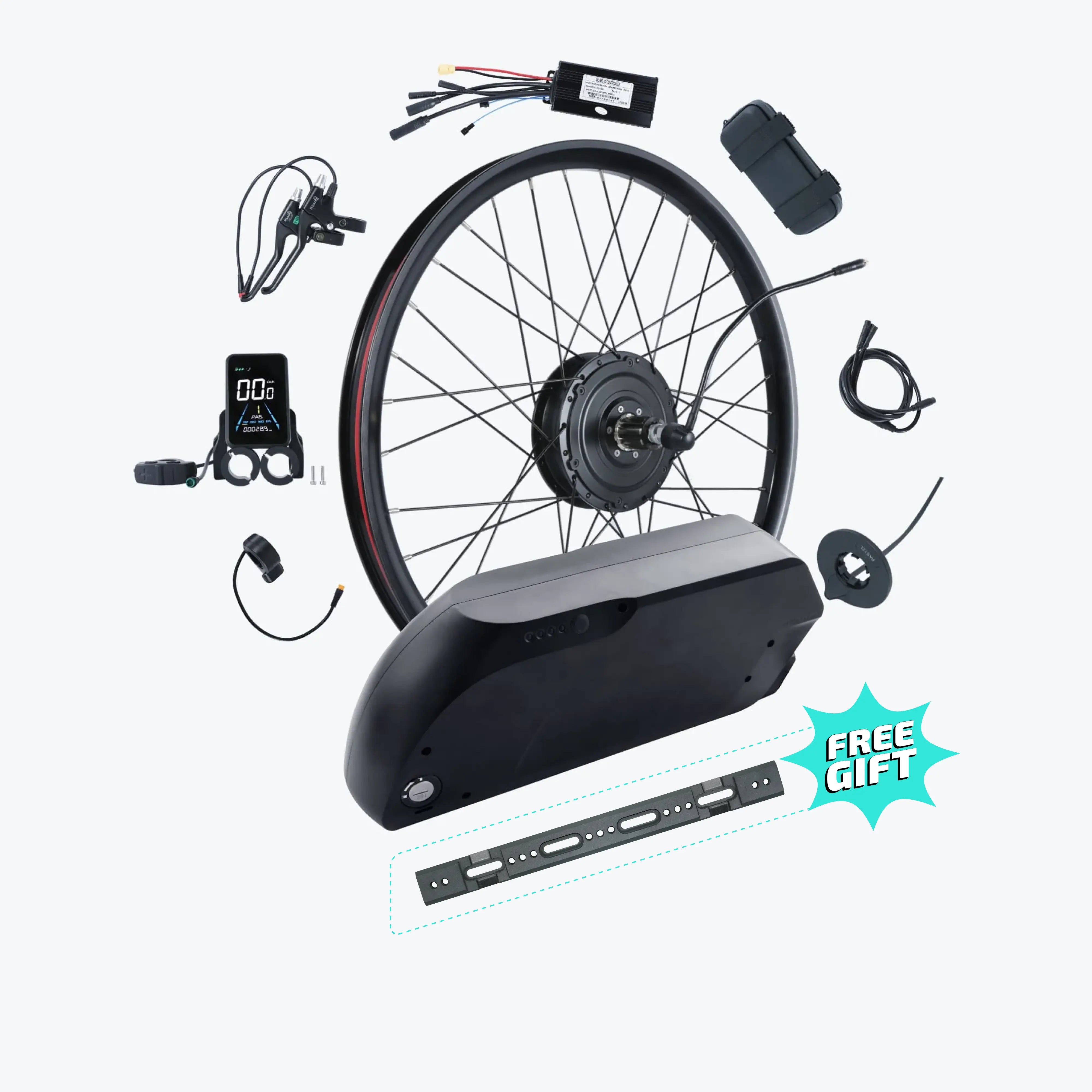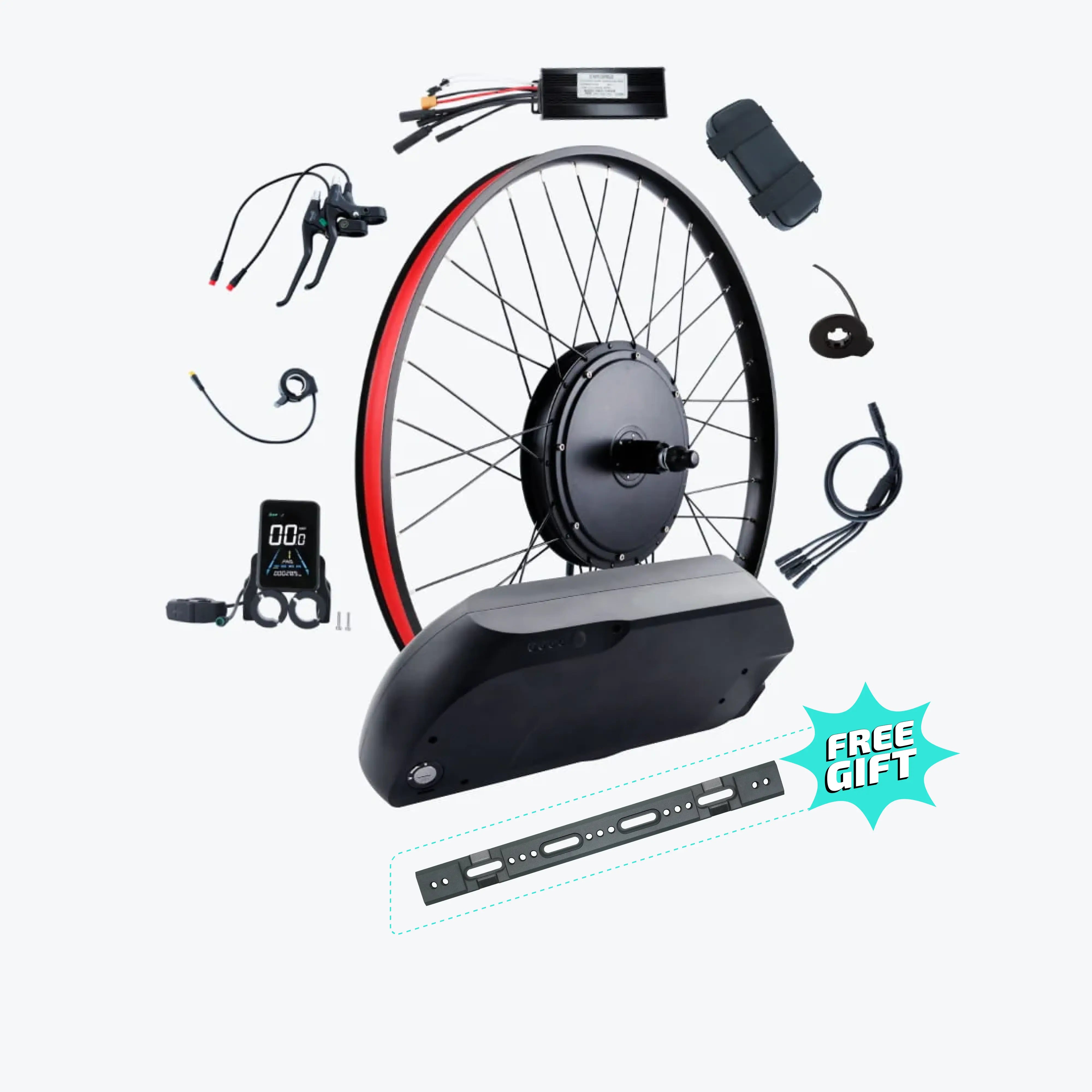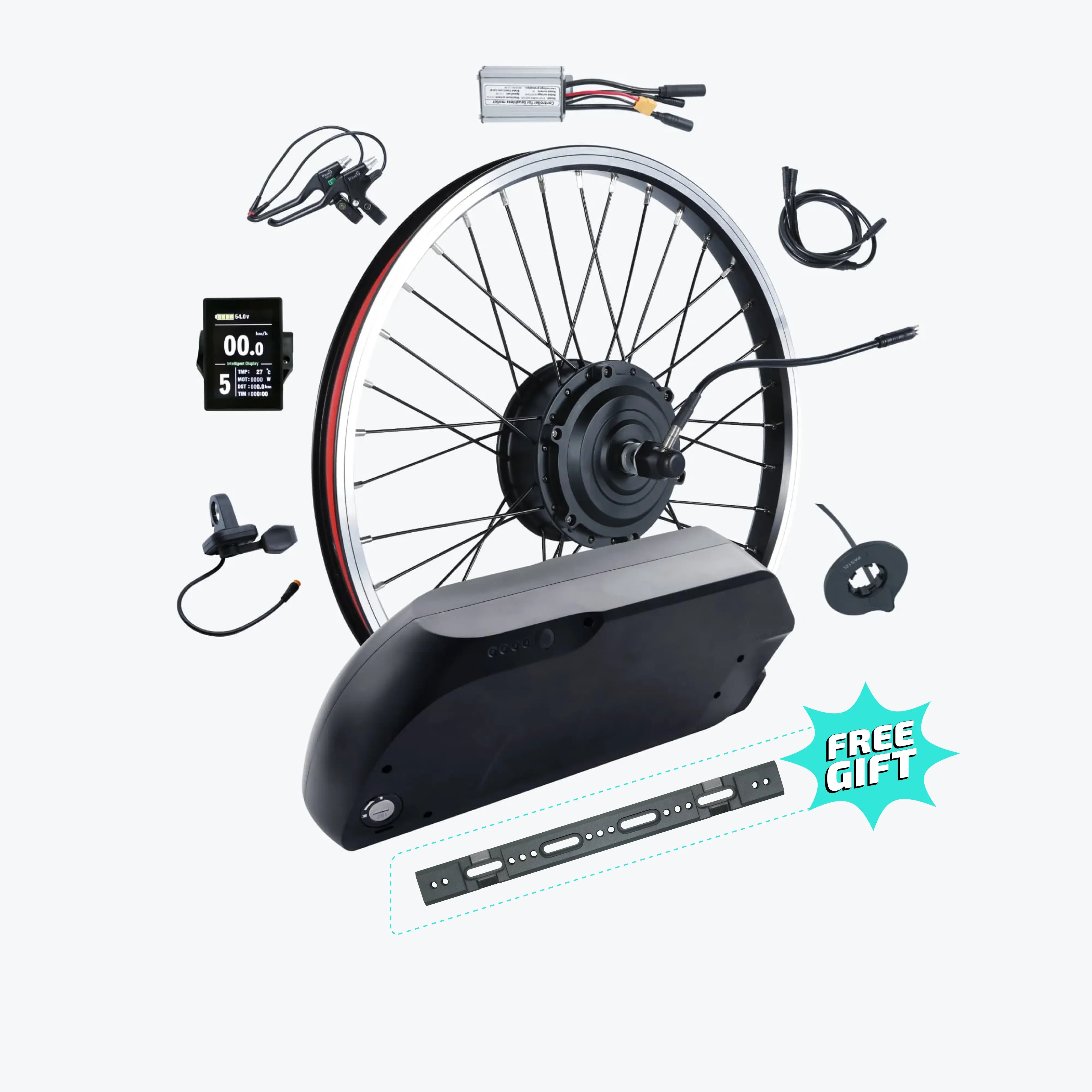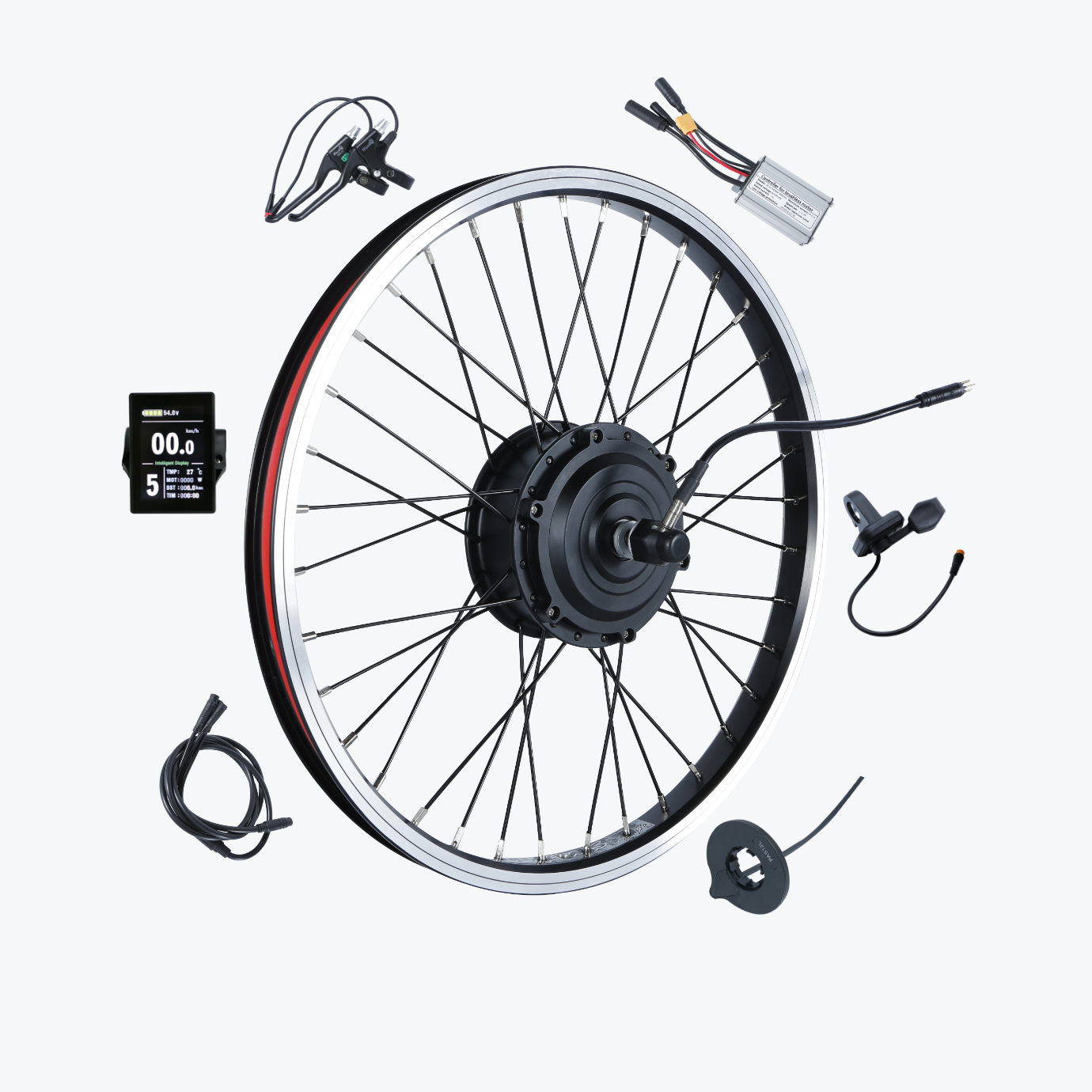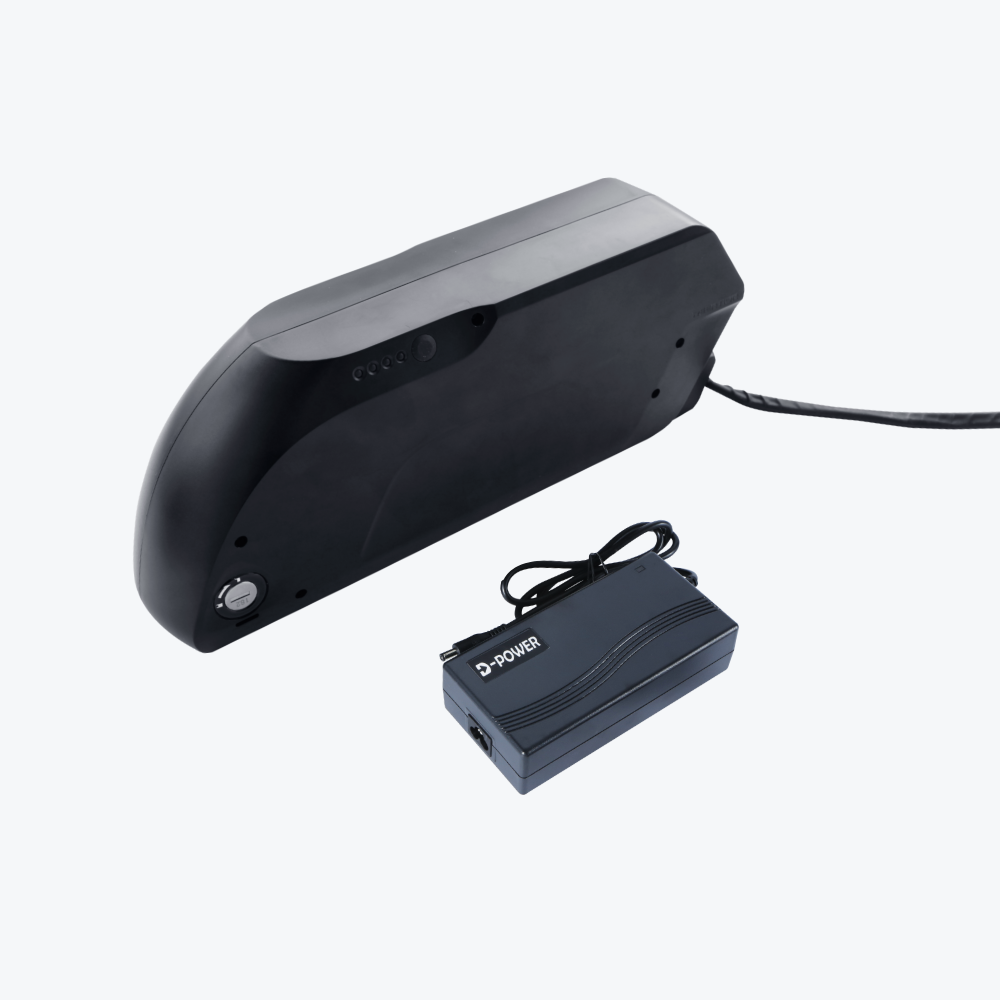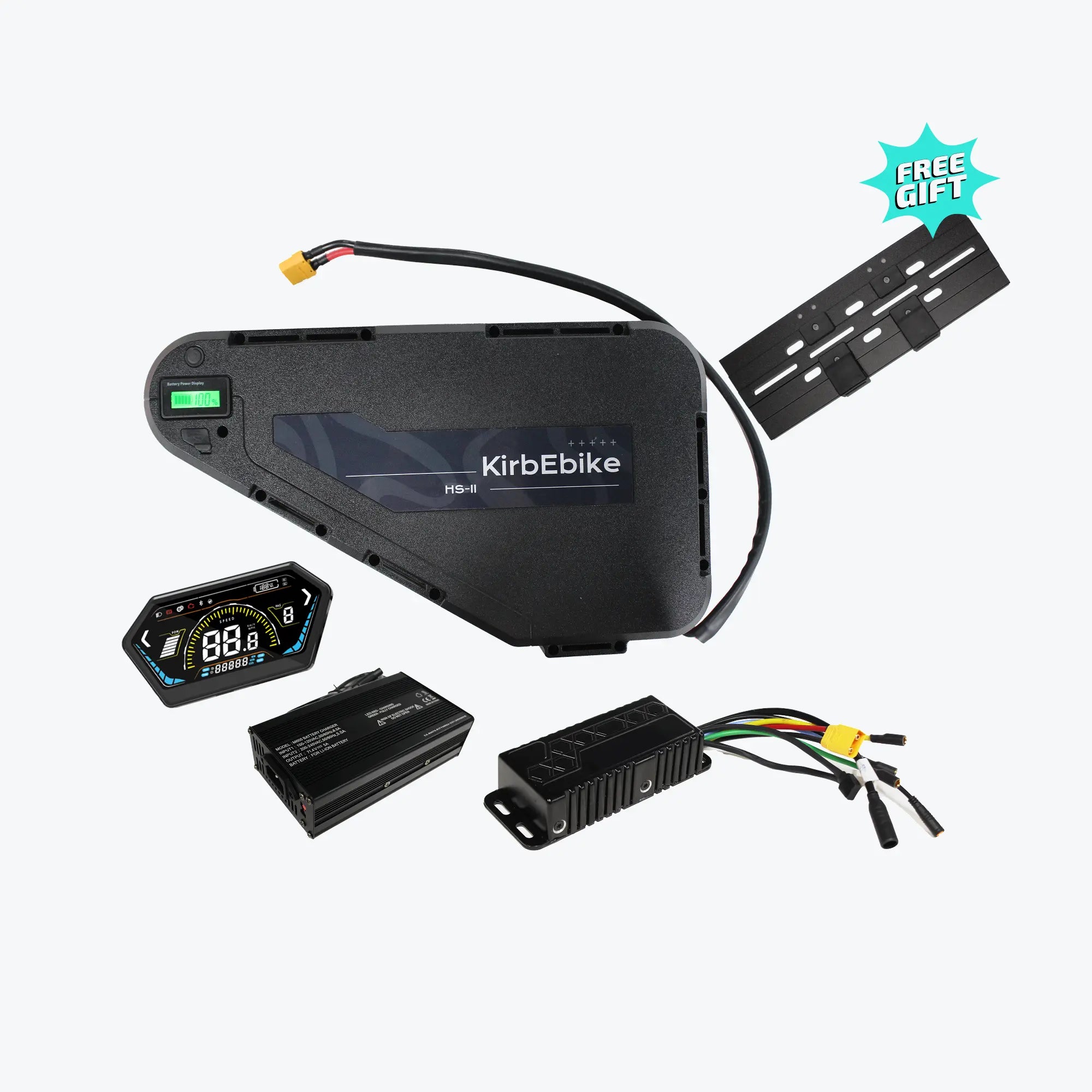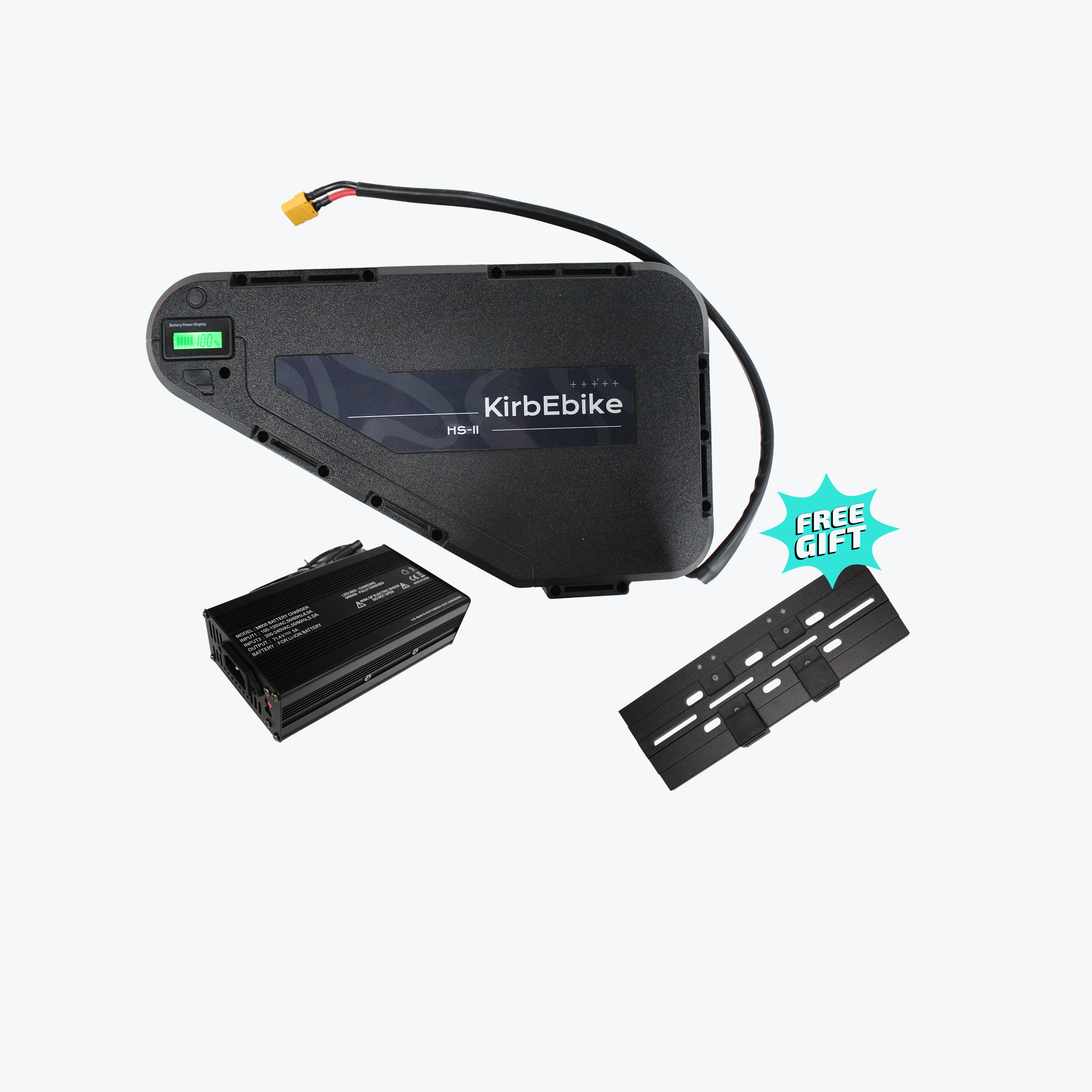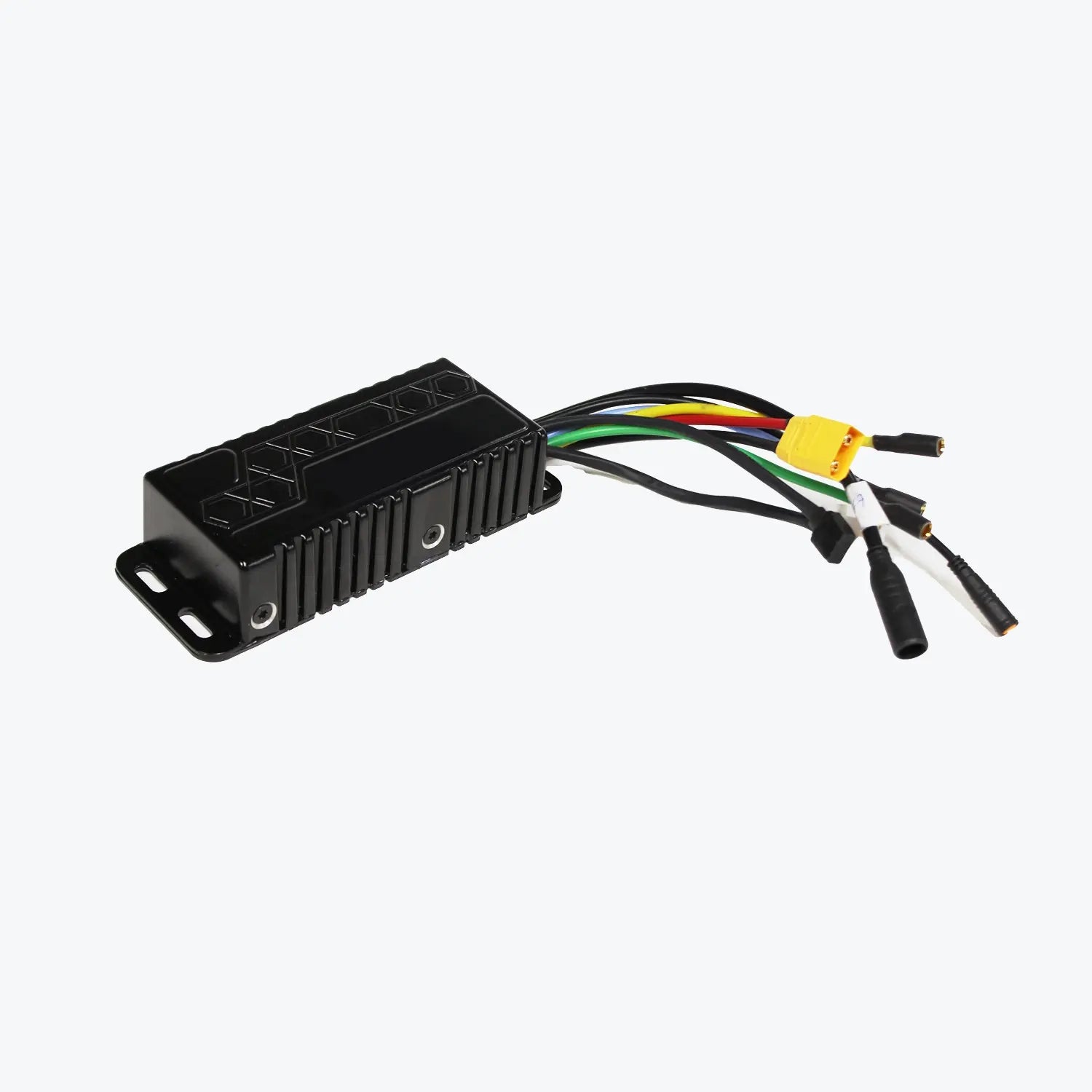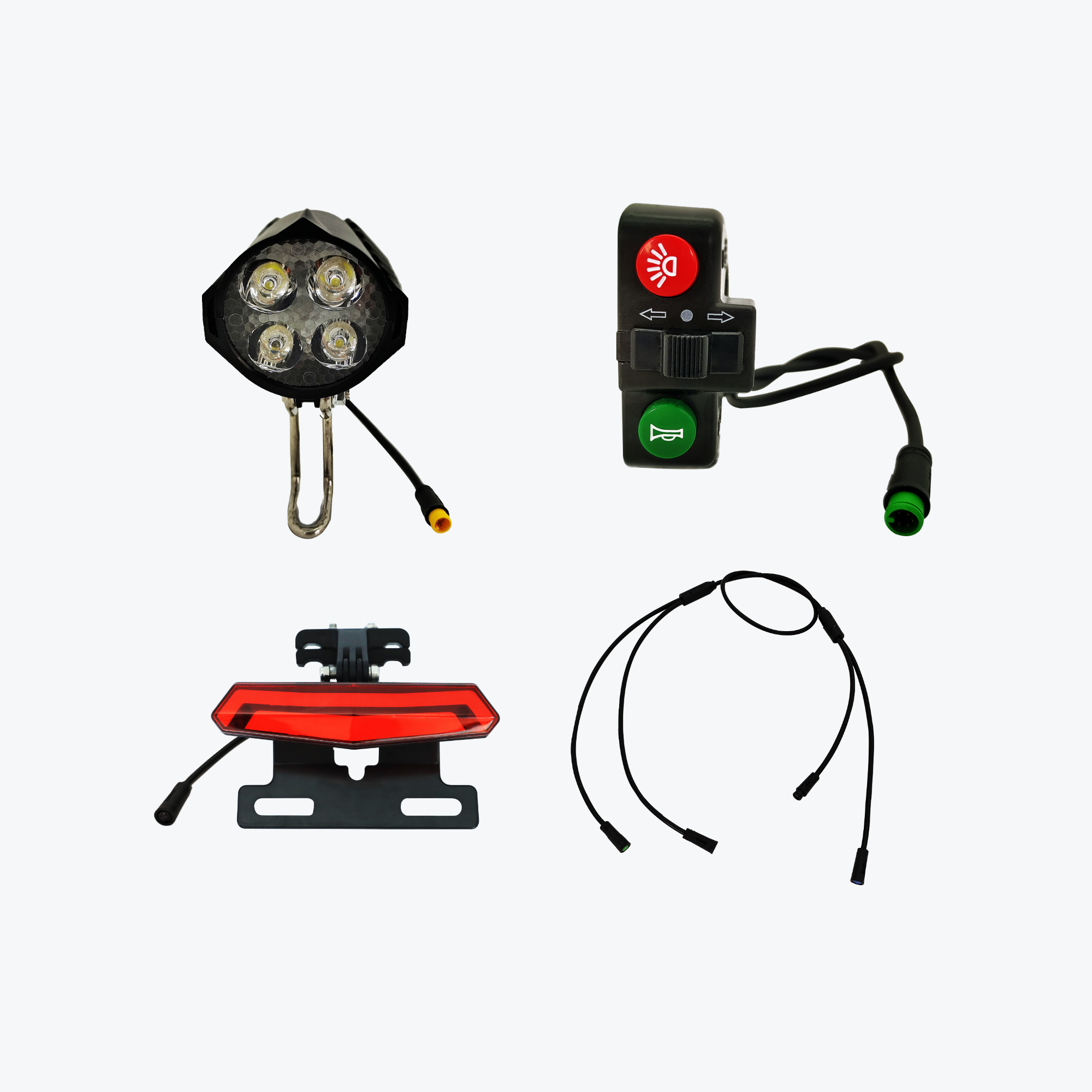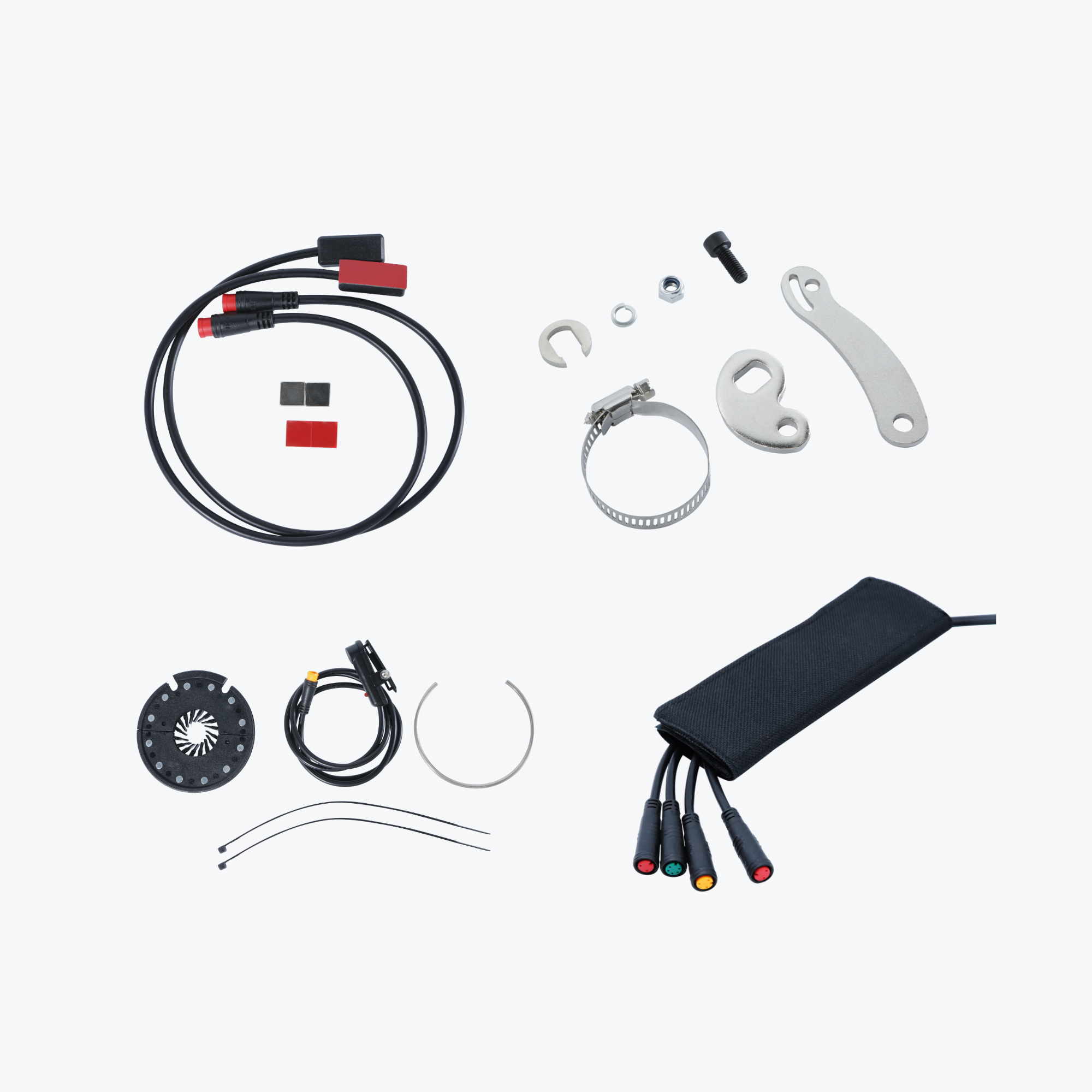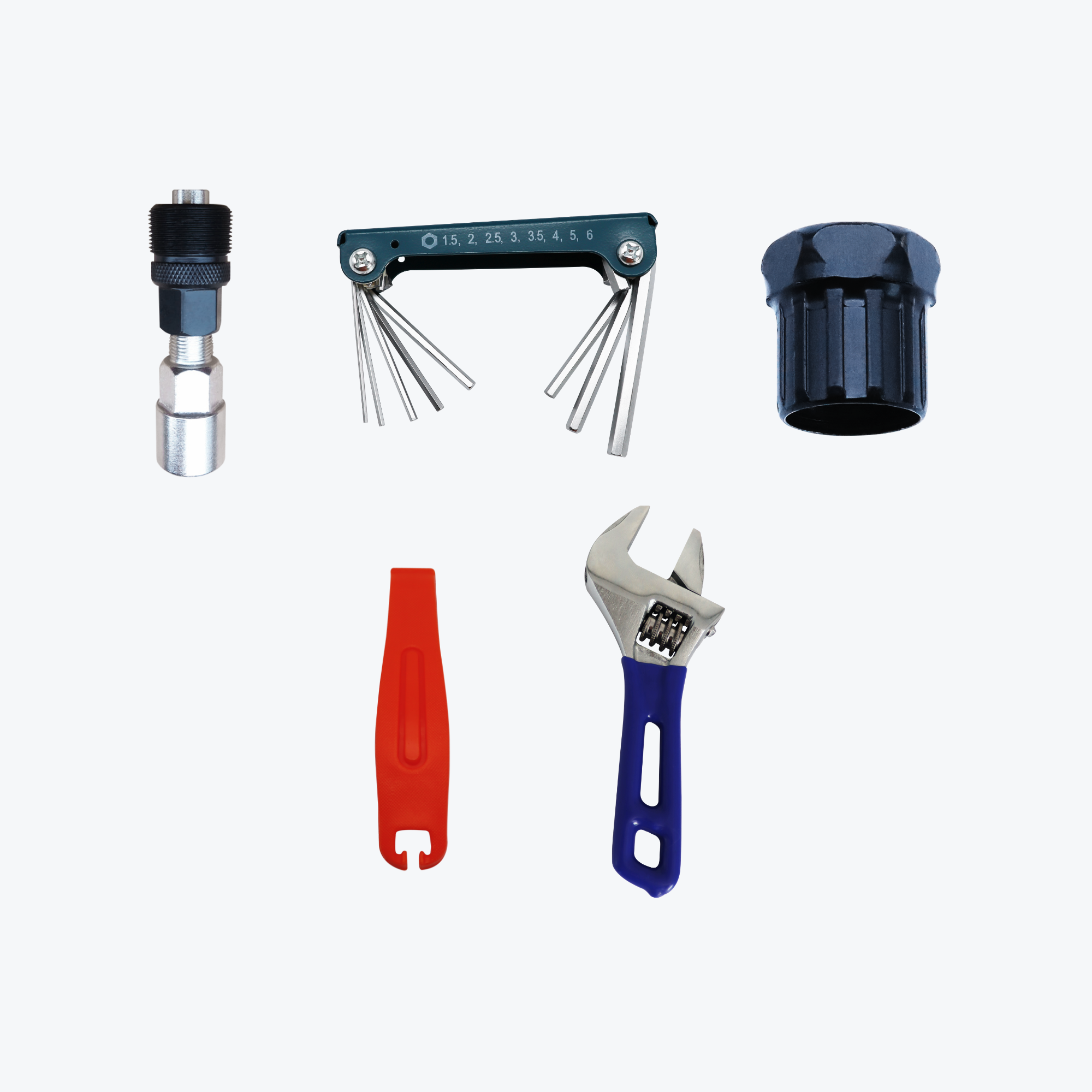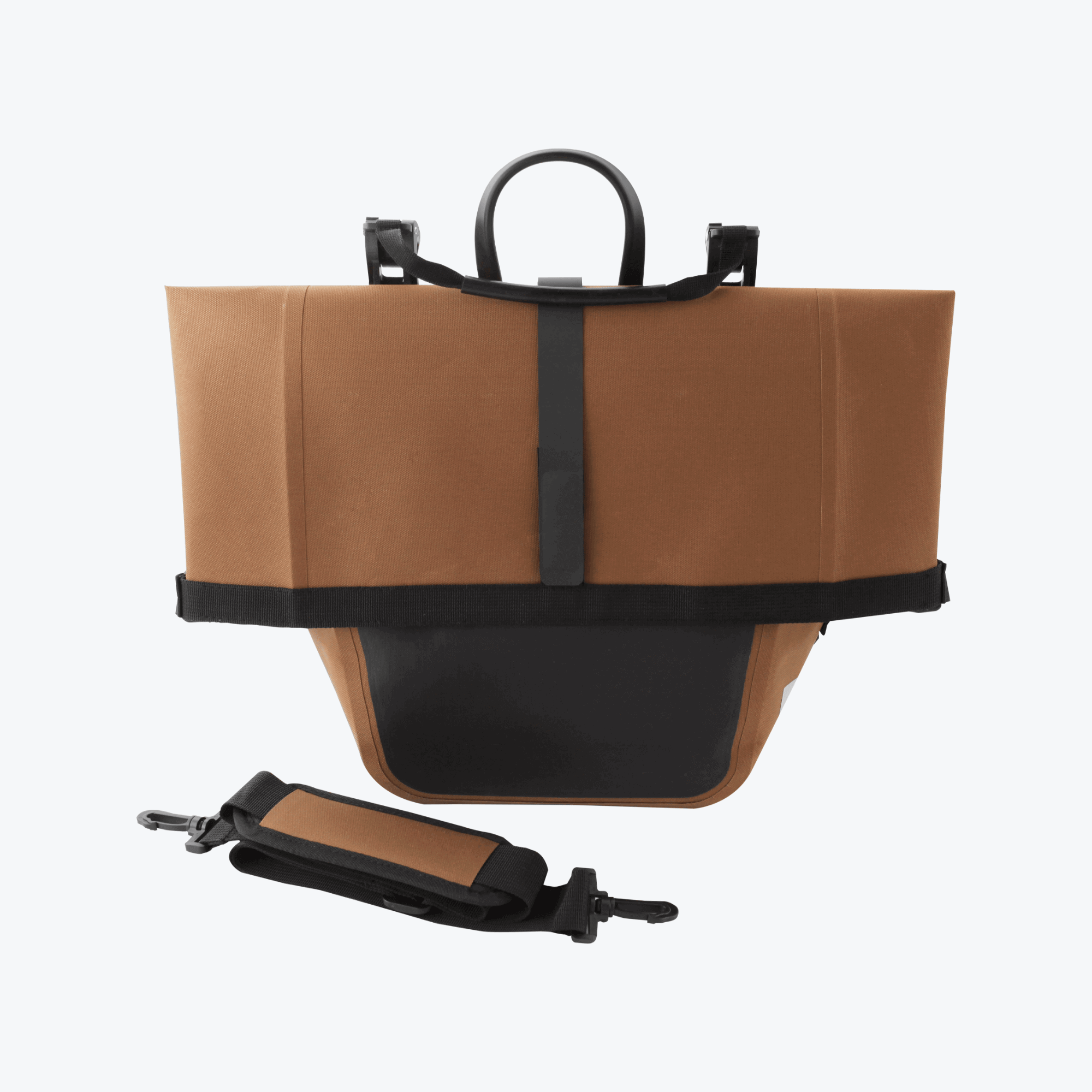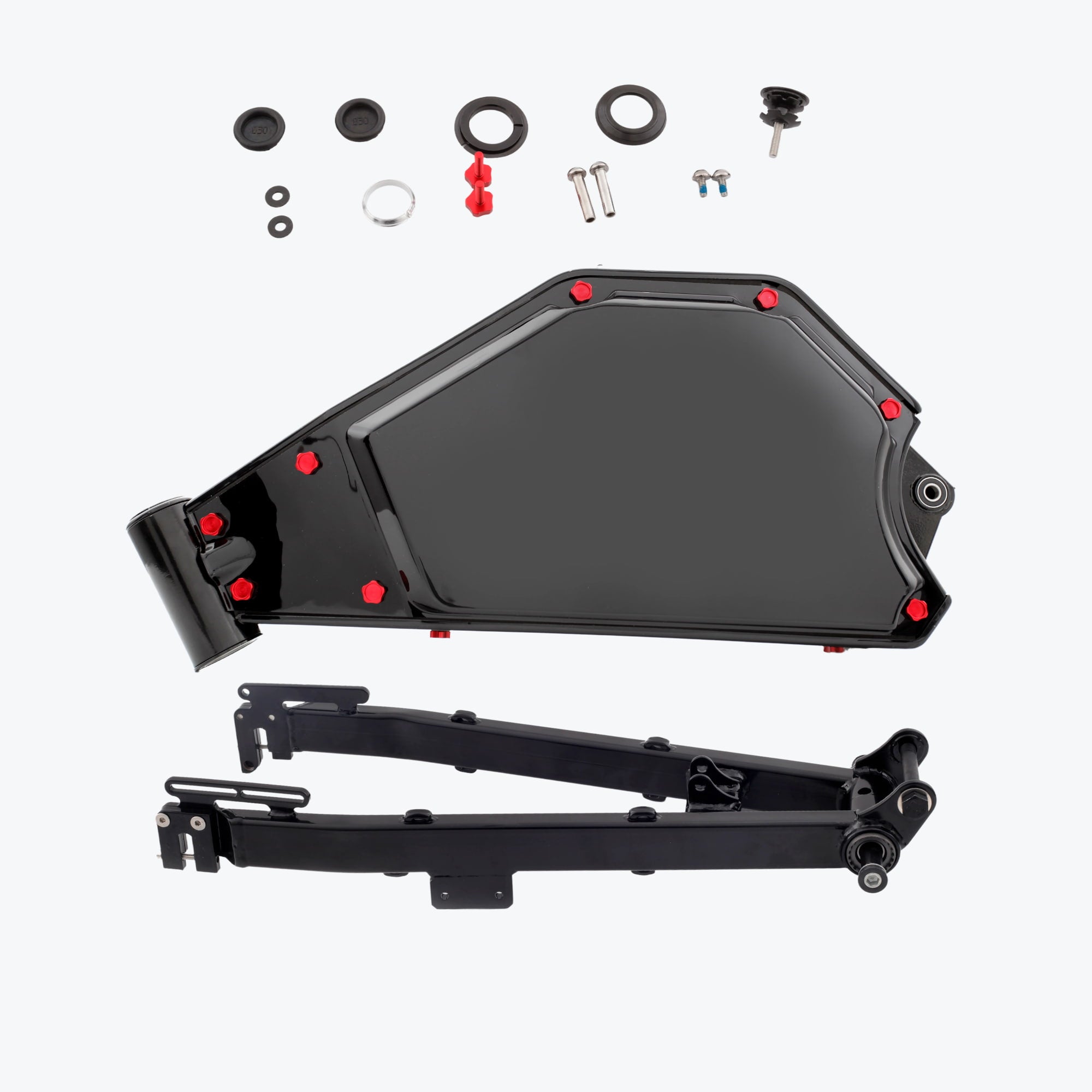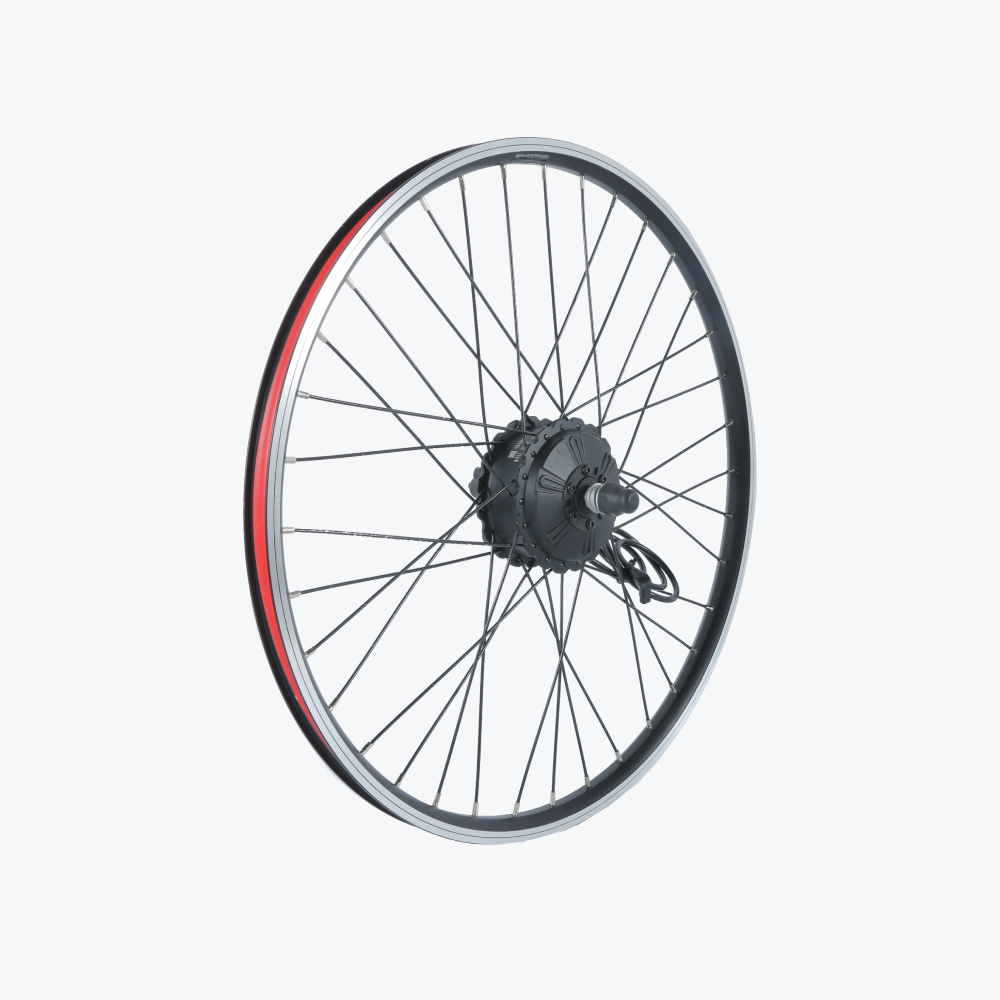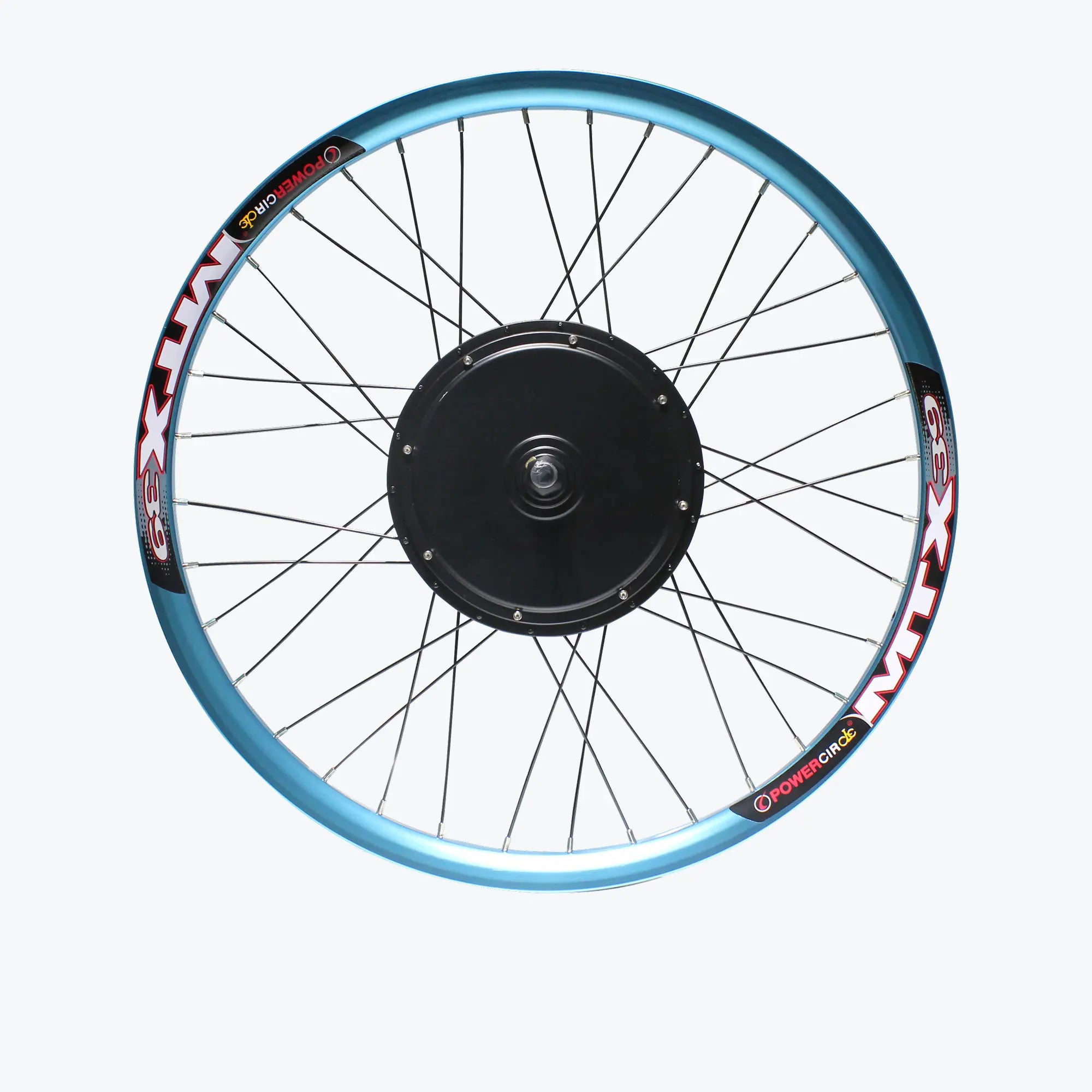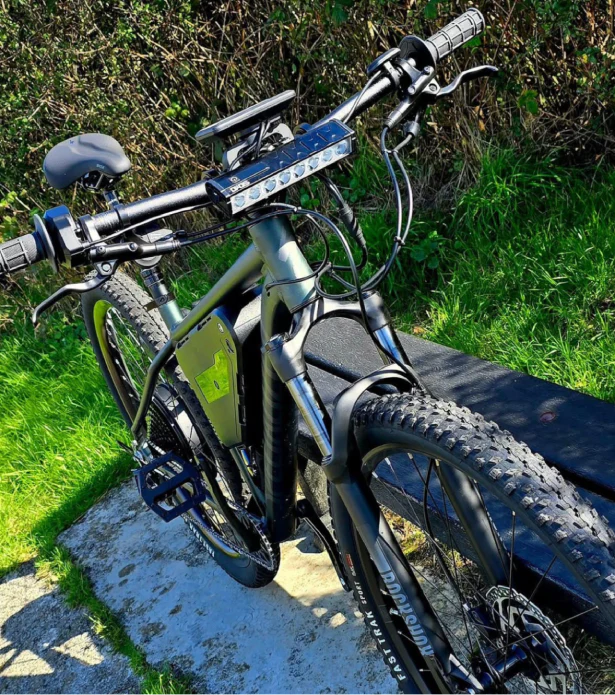A hybrid e bike is the friendliest way to turn everyday trips into easy wins. It rolls like a city bike, tackles park paths like a light trail bike, and adds electric assist so you arrive fresher and faster.
Whether you’re converting a bike you already love with a kit and battery or shopping new, this guide explains how pedal assist actually feels, what frame/tyre choices matter, how to size your battery for real routes, and how to tune your setup so it rides naturally.
What makes a hybrid e-bike… hybrid?
A hybrid blends road-bike efficiency with the comfort and tire clearance of a city/trekking bike. Add a motor, controller, and battery, and you’ve got an e bike hybrid: upright position, stable handling, puncture-resistant tires, full rack/fender compatibility, and enough assist to flatten your ride.
-
Comfort: Relaxed geometry, ergonomic grips, and slightly wider tires (32–45 mm) absorb London cobbles and suburban seams.
-
Capability: Mounts for racks, baskets, and fenders. Room for lights and a sturdy kickstand.
-
Control: Disc brakes (ideally hydraulic) and a drivetrain geared for stop-start traffic and rolling park paths.
If you own a classic city bike, a fitness hybrid, or a trekking frame, it’s usually a perfect donor for a conversion kit. Even specific models (e.g., a “vitesse pulse ladies hybrid 48cm frame e bike”) sit in this category—mixing easy step-through access and stable geometry with everyday practicality. The principles in this guide apply to those frames as well.
How pedal assist feels (and how to make it feel natural)

The heart of a hybrid e-bike is pedal assist (PAS). When you turn the cranks, the motor supplies a proportion of your effort. The result isn’t “moped-like thrust.” It’s more like a tailwind that you control with your legs.
What to expect on day one
-
Level 1–2 (Eco/Low): Gentle breeze. You still do most of the work, but hills sting less. Perfect for towpaths and shared spaces.
-
Level 3–4 (Tour/Normal): Brisk commuting. You float at traffic pace and roll away from lights without strain.
-
Level 5 (High/Boost): Short bursts for bridges, steep park ramps, or cargo.
Tuning tips to keep it smooth
-
Start one level lower than you think you need. Let your legs set cadence and use the motor to erase only the unfun bits—headwinds, false flats, speed bumps.
-
Shift early. PAS rewards steady cadence. Drop a gear before a short climb; the bike will feel twice as cooperative.
-
Brake like a cyclist, not a scooter. Two-finger braking and looking well ahead give you space to modulate.
-
Use walk assist thoughtfully. If your kit includes it, it’s brilliant for ramps and loaded bike pushes.
Motor options for hybrids (and when each shines)

You’ll see three common drive types on an e hybrid bike. All can be built into a calm, everyday machine; they just shine in different scenarios.
Front hub (simplest commuter build)
-
Feel: Light steering change, clean install, drivetrain untouched.
-
Best for: Flat/rolling cities, folding bikes, step-through frames, and anyone who wants the fastest conversion.
-
Consider: Traction on very steep or slick starts; keep tires in good shape and weight centered.
Rear hub (balanced traction & value)
-
Feel: Natural push from behind, simple wiring, great for year-round commuting.
-
Best for: Mixed city/park use, light gravel connectors, riders who prefer a very low-maintenance wheel-swap build.
-
Consider: Wheel removal includes unplugging the motor lead; practice once at home.
Mid-drive (most “bike-like” on hills)
-
Feel: Uses your gears, so climbs feel efficient and natural.
-
Best for: Hilly towns, fitness-forward riders, loaded panniers.
-
Consider: More involved install; drivetrain care matters (keep the chain clean and replace cassettes on schedule).
Batteries for real routes: how much is “enough”?

Range is about watt-hours (Wh) and terrain. Hybrids shine in stop-start, sub-25 km/h city speeds where energy use is modest. Rough planning:
-
360–500 Wh: Daily commuting, school runs, canal loops; light and affordable.
-
500–700 Wh: Longer cross-town errands, hilly suburbs, regular headwinds.
-
700 Wh+: Big weekend rides, cargo duty, or if you simply never want to think about range.
Charging habits that extend life
-
Charge near ride time; avoid parking at 100% for days.
-
Store cool at 40–60% if you won’t ride for a while.
-
Don’t run to 0% frequently; shallow cycles are gentler.
Tyres, contact points, and small parts that change everything

The invisible heroes of a great e bike hybrid are the parts you touch and the rubber you roll.
Tyres (your comfort dial)
-
32–38 mm slicks: quick and quiet on tarmac, still comfy.
-
35–45 mm “all-road” tread: extra grip on canal grit and park connectors.
-
Run pressures lower than a road bike—enough support to avoid rim strikes, but allow the casing to flex. Comfort skyrockets.
Contact points (your peace dial)
-
Grips: Ergonomic shapes ease wrist pressure.
-
Saddle: Slightly wider than a race saddle; level the nose and set height so your knee is softly bent at the bottom of the stroke.
-
Bars: A touch of back sweep relaxes shoulders on longer rides.
Brakes (your confidence dial)
-
Hybrid e-bikes carry more momentum than analog bikes. Fresh pads, true rotors, and good cables/fluid are non-negotiable. Two-finger modulation beats late, hard grabs every time.
Advantages, disadvantages, and who a hybrid e-bike fits best

Advantages (benefits in plain words)
-
Arrive fresher. PAS smooths the spikes—headwinds, bridges, short ramps.
-
Flexible routes. Road, path, park connectors, light gravel—the hybrid is made for variety.
-
Easy to live with. Racks, baskets, mudguards, lights—daily utility built-in.
-
Budget-friendly upgrades. Converting your current bike often costs less than buying new—and feels more “you.”
Disadvantages (honest trade-offs)
-
Weight vs. simplicity. More battery = more range and more heft. Match capacity to your real rides.
-
Maintenance rhythm. Chains, cassettes, and pads wear a bit faster with assist—plan regular checks.
-
Learning curve. A week or two to feel truly natural as you size PAS to cadence and practice early shifting.
Who it fits best
-
City commuters who want predictable, low-stress speed and easy parking.
-
Return-to-riding cyclists who want confidence on varied paths without buying a mountain or road bike.
-
Everyday errand runners who love panniers, baskets, child seats, and “one bike for most days.”
Conversion vs. complete e-bike: which path should you take?

Convert your current bike if:
-
You already love how it fits and handles.
-
The frame has disc brakes (preferably hydraulic) and space for a tidy battery mount.
-
You enjoy small home projects and want control of specs.
Buy complete if:
-
Your current bike needs major work anyway (wheels, drivetrain, brakes).
-
You want a warranty-integrated package and plug-and-play ownership.
-
Dealer fitting and aftercare feel valuable to you.
UK-road basics in one minute (so you ride with confidence)

-
250 W maximum continuous motor rating
-
Assistance cuts at 15.5 mph (25 km/h)
-
Pedals must be usable to propel the bike
-
Rider 14+
Throttle is fine as walk-assist (~6 km/h); beyond that without pedalling needs type approval. For hybrid e-bikes used as urban transport, these limits make daily riding simple and legal. If you also own a high-power off-road build, keep it for private land/appropriate venues and maintain a separate compliant hybrid for town.
Setup recipes (features, pros & cons) you can borrow
City-calm commuter (front hub, 250 W)
-
Features: Front hub motor, 36–48 V 360–500 Wh battery on down-tube or rack, 35–40 mm slicks, full fenders, lights, rear rack.
-
Pros: Light overall weight; quickest conversion; drivetrain untouched; perfect for folders/step-throughs.
-
Cons: Front-wheel traction on very steep/wet starts can require seated weight over the bar; not ideal for heavy cargo hills.
All-rounder with hills (mid-drive, 250 W)
-
Features: Mid-drive with torque-sensing PAS, 500–700 Wh battery, 38–45 mm all-road tires, sturdy rear rack.
-
Pros: Most “bike-like” feel; climbs beautifully using your gears; balanced weight.
-
Cons: Install complexity; drivetrain care matters (lube and replace wear items on schedule).
Mixed-surface cruiser (rear hub, 250 W)
-
Features: Rear hub, 500–700 Wh battery, 40–45 mm tires with light tread, swept bar for comfort.
-
Pros: Traction confidence; very low maintenance; serene PAS feel with a push from behind.
-
Cons: Rear wheel removal adds a cable step; choose puncture-resistant tires to avoid roadside faff.
Features checklist when choosing a kit & battery (pros/cons quick notes)
Motor & controller
-
250 W continuous rating: UK-road simple; gentle on drivetrains.
-
FOC sine-wave controller: Quiet starts, smooth ramps.
-
Display with easy limit settings: So you can fine-tune cut-off and assist levels without a manual marathon.
Battery & mounts
-
Wh sized to routes: 360–700 Wh covers most hybrid use.
-
Secure mounts (triangle/downtube): Balanced weight, fewer rattles.
-
Charger amperage: 2–5 A is the sweet spot; faster equals more heat/stress.
Wiring & connectors
-
Water-resistant harnesses: Towpath proof.
-
Quality connectors: XT/MT series or equivalents; avoid “mystery” adapters that get hot.
Pros of getting this right: Quieter ride, fewer surprises, longer component life.
Cons of rushing: Cable rubs, creaks, and the “why is my range short?” guessing game.
Conclusion
A hybrid e bike should feel like a familiar bicycle with a friendly tailwind. Upright position, stable tires, good brakes, and a battery sized to your real routes—that’s it.
Choose front hub for simplicity, rear hub for balanced traction, or mid-drive for natural hill work. Start with PAS lower than you think, shift early, and let cadence lead. The bike will quietly become part of your day.
Frequently asked questions
Is a hybrid e-bike good for beginners?
Yes. Upright stance, stable handling, and gentle PAS make learning stress-free.
How much battery do I need?
Urban riders thrive on 360–500 Wh. Hilly or longer routes like 500–700 Wh. Size for your real week.
Front hub vs. mid-drive—what’s right for me?
Front hub = easiest install and low cost. Mid-drive = most natural on hills. Rear hub splits the difference with great traction and low maintenance.
Can I convert my current hybrid?
If it’s in good shape (especially brakes and wheels), yes. A kit keeps the bike you love and adds assist tailored to your routes.
Is it legal on UK roads?
Yes—when set to 250 W continuous with assist cut-off at 15.5 mph and pedals engaged. Use throttle only as walk assist unless type-approved.

